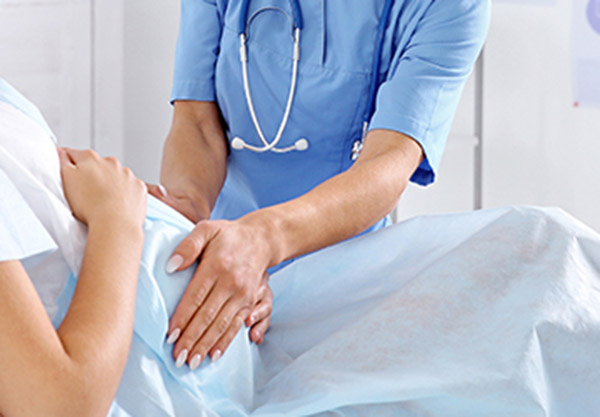Your first consultation is an opportunity for us at the NVH to know about your medical history and prepare a personalized fertility treatment plan that addresses your wishes and aspirations of having a healthy baby.
The infertility assessment includes a series of tests that evaluate the reproductive function of the couple thereby identifying the cause of infertility.
These tests include:
- SEMEN ANALYSIS
This is the test for the evaluation of the male. It assesses the volume of sperm, sperm concentration, motility or movement of the sperm and the percentage of normal-looking sperm. If the semen analysis done is found to be abnormal, a repeat analysis should be requested.
Mode of collection
- You would be counselled to abstain from smoking cigarettes and drinking alcohol before this period.
- Abstain from sex 3 days before the collection of semen.
- Before the sperm collection process, ensure you wash your hands with soap and water and keep your hands clean.
- Collect semen by masturbation in a sterile container provided by the clinic. It is preferable to produce the semen in the clinic. However, if you have challenges producing semen in the clinic and prefer producing it at home you have to bring the sample to the clinic within 1 hour of production. It has to be delivered by you.
- Hand over the sperm specimen container to laboratory personnel and ensure you come with a means of identification.
Normal Semen Analysis Result
| Volume: 2 – 6 ml
Color: Whitish grey Liquefaction: 30 – 60 minutes PH: 7.2 – 7.8 Viscosity: Normal Sperm Count: > 15 million sperm/millimeter Total Sperm Count: Above 40 million in ejaculate Motility: 40% of total number of sperm Morphology [Normal Forms]: 4% of total sperm
|
- ASSESSMENT OF OVARIAN RESERVE
This test is done to assess the quality and quantity of eggs in the woman. Both factors are known to affect the chances of pregnancy. A woman needs a good quantity of high-quality eggs to get pregnant. Both the quality and quantity of eggs reduce rapidly after age 35.
Tests to assess this include:
- Anti Mullerian Hormone [AMH]
This is a hormone present in women of reproductive age that gives us an idea of the number of follicles in your ovaries and the chances of pregnancy occurring. The test can be carried out at any time of the woman’s cycle and involves a blood sample.
Normal value: 1.0 – 4.0 ng/ml
Reduced value: Less than 1.0 ng/ml
Elevated value: More than 4.0 ng/ml [risk of polycystic ovary]
- Hormonal Profile
A blood sample can also be taken on the 3rd day of menses to assess for Follicle Stimulating Hormone [FSH] and Estradiol. An elevated FSH level indicates a reduction in the quantity of egg.
- Antral Follicle Count [AFC]
This involves a transvaginal ultrasound scan which is used to check for the number of follicles available just after the menses. It gives an idea of the fertility potential of the woman.
- ASSESSMENT OF FALLOPIAN TUBES
PATENCY
These tests are done to determine the patency of the fallopian tube and the status of the uterine cavity to ensure the fertilized egg can implant in it and thrive. A woman must have one or both tubes patent for the sperm to reach the eggs after intercourse. If the tubes are blocked pregnancy will not occur naturally.
Tests to assess this include:
- Hysterosalpingogram [HSG]
This is an X-ray test in which a radio-opaque dye is injected into the uterus to outline the endometrial cavity and the fallopian tube. The test is carried out within the first 5 days after menses.
- Saline Sonohysterogram
This is an imaging study of the uterus using a transvaginal scan to view the uterine cavity and the fallopian tube while inserting fluid into the uterus via the cervix. It picks up conditions like endometrial polyps, endometrial fibroids.
- Laparoscopy and Dye Test
A laparoscopy and dye test is an operative procedure to look at your internal organs usually the fallopian tube using a telescope and a monitor. A blue dye is pushed through the vaginal and the fallopian tube checked if the fluid flowed out through the other end of the tube.
- ANCILLARY INVESTIGATIONS
These tests are done to ensure both couples are fine. They are carried out before treatment commences. The woman has more tests carried out because she will be receiving several hormonal medications and we need to be sure she is healthy enough to get pregnant and deliver safely.
| Female investigations | Male investigations |
| Chest X-ray | HIV Test |
| Electrocardiogram [ECG] | Hepatitis B,C |
| Pap Smear | |
| HIV test | |
| Hepatitis B, C | |
| Full Blood Count [FBC] | |
| Electrolyte, Urea, Creatinine [E, U, Cr] | |
| Mammogram [Women above 40 years] | |
| Fasting Blood Sugar | |
| Urinalysis | |
| Liver Function Test [LFT] | |
| Lipid Profile |

